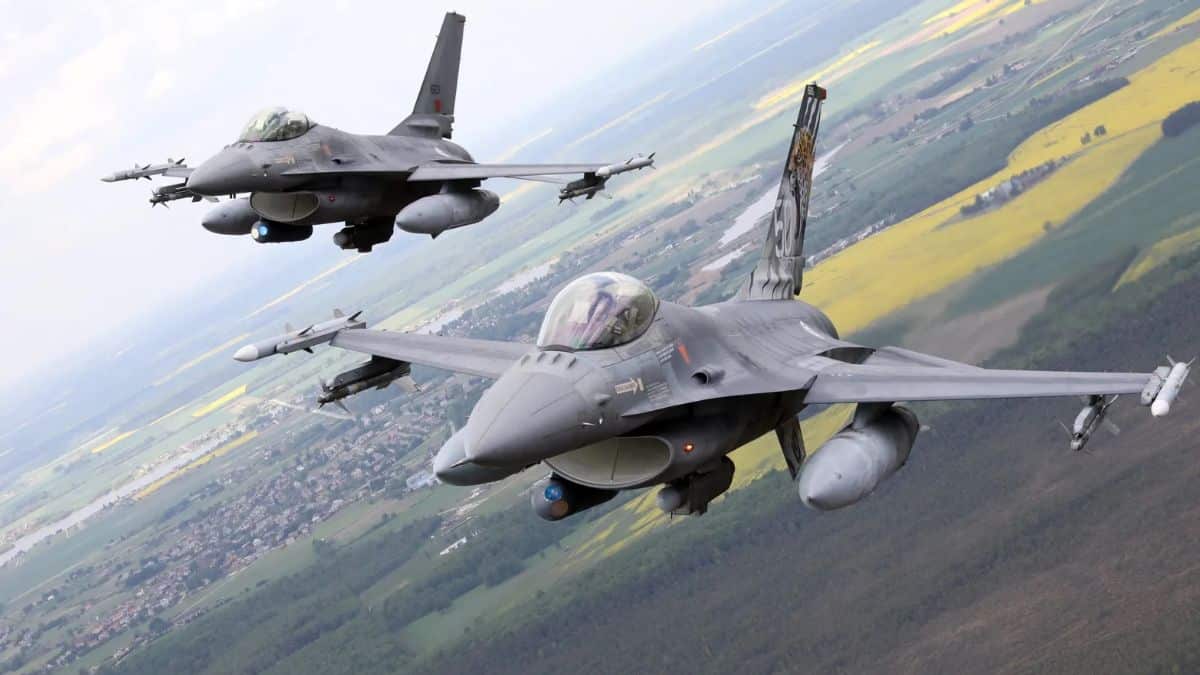 Image Credits - Bloomberg
Image Credits - Bloomberg
Ukraine has intensified its military efforts against Russia, targeting the Kursk region and signalling a shift in strategy as it begins receiving F-16 fighter jets from Western allies. These developments mark a critical phase in Ukraine’s ongoing counteroffensive, which has seen a mix of defensive manoeuvres and targeted strikes on Russian territory.
On Wednesday, Russia’s Defence Ministry reported that it had successfully thwarted a major Ukrainian attack in the Kursk region. According to Moscow, Ukrainian forces attempted a two-pronged attack from Sumy into Kursk using a battalion’s worth of armoured fighting vehicles and tanks. Satellite images later confirmed the destruction of several cars about 7 kilometres (4 miles) inside Russian territory. This marks one of Ukraine’s most substantial cross-border operations, which has generally focused on defending its territory while launching limited strikes into Russia.
This escalation comes as Ukraine continues its defensive strategy in the Donetsk region, where fighting remains intense. Ukrainian forces have been gradually ceding ground in small increments to conserve their manpower, particularly in the embattled areas of Pokrovsk and Chasiv Yar. Ukrainian President Volodymyr Zelenskyy identified Pokrovsk as a priority for Russian forces, with heavy concentrations of personnel and weapons aimed at this strategic location. Despite fierce resistance, Ukrainian forces have been unable to hold Chasiv Yar, a key defensive position that has been under siege for months.
Amid these challenges, Ukraine has begun to receive its first F-16 fighter jets from Western allies, a significant boost that could shift the balance of power in the air. Ukrainian officials hope that these advanced jets will enhance their capability to counter Russia’s aerial dominance and support their ground operations more effectively. The F-16s are expected to be a game-changer, potentially allowing Ukraine to strike deeper into Russian-controlled territory and disrupt supply lines.
In addition to receiving new military hardware, Ukraine has been expanding its forces, building an estimated 15 new battalions in preparation for a major counteroffensive. However, Ukraine’s ground forces still face significant challenges, particularly in matching Russia’s superiority in troop numbers and firepower. Ukrainian Brigadier-General Andriy Hnatov acknowledged these difficulties, noting that Russia’s strategy of attrition has slowed Ukraine’s ability to regain the initiative.
Ukraine’s recent strikes on Russian territory, including attacks on oil facilities in Rostov, Kursk, and Belgorod, indicate a broader strategy of weakening Russian logistical and supply networks. The use of drones and missiles to target Russian infrastructure has been particularly effective, with Ukrainian forces claiming to have destroyed a Russian submarine and several key military assets in recent weeks.
As Ukraine continues to refine its strategy, the combination of new military assets, including the F-16s, and persistent pressure on Russian forces, could mark a turning point in the conflict. However, the path ahead remains fraught with challenges, as both sides continue to incur heavy losses in a war that shows no signs of abating.
